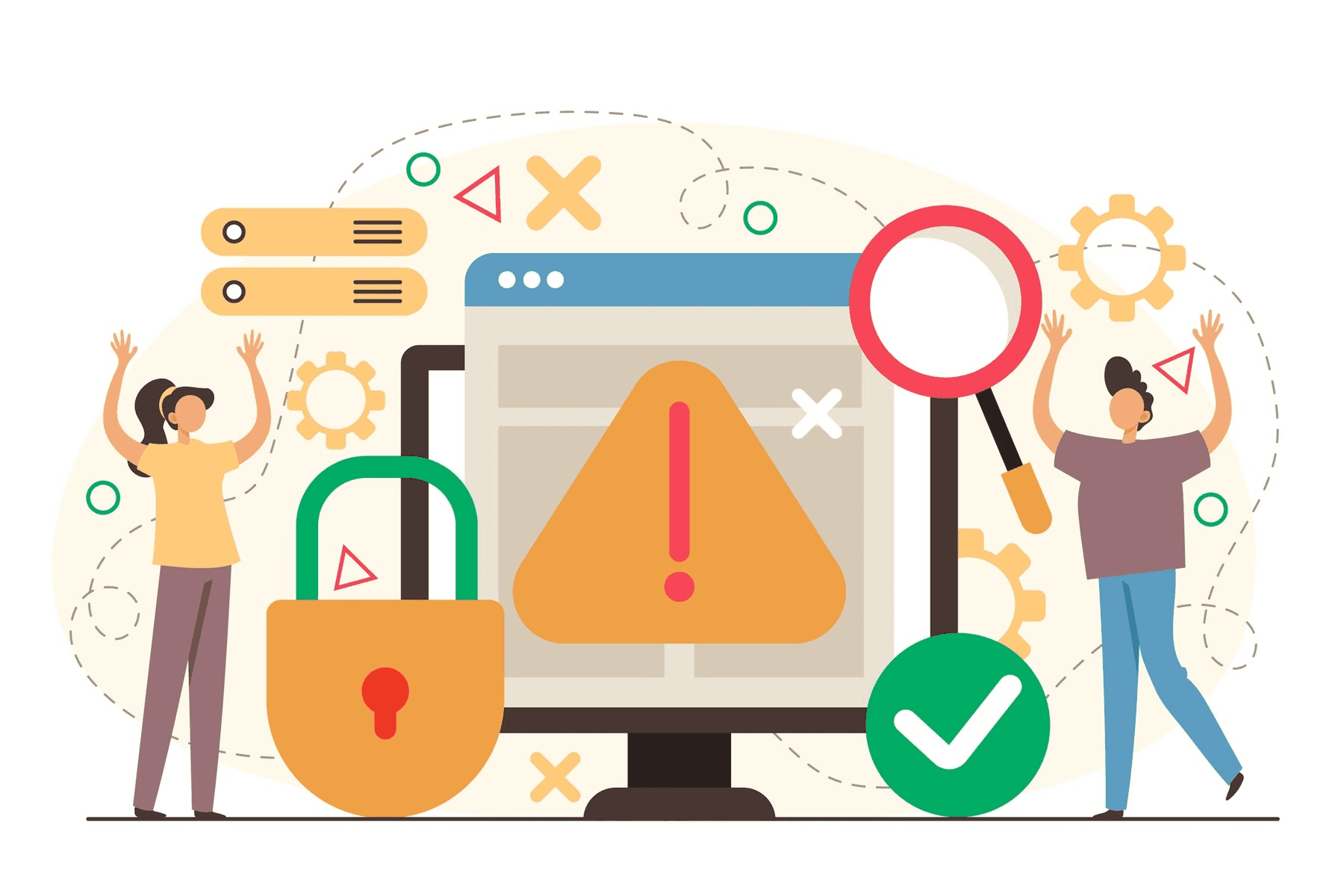Office management software has become a cornerstone of modern project workflows, enabling seamless collaboration, efficient resource allocation, and streamlined communication. Yet, as dependency on these tools grows, so do the associated security risks.
Left unchecked, these vulnerabilities jeopardize critical data, disrupt operations, and undermine the very efficiency these tools aim to deliver. Addressing these risks is not optional; it is essential for maintaining operational integrity and protecting sensitive information.
This blog delves deeply into the security risks inherent in office management software, uncovering their root causes, implications, and the precise measures required to mitigate them.
Common Security Risks in Office Management Software
Data Breaches and Unauthorized Access
Data breaches are not abstract threats; they are real, costly, and damaging. Inadequate access management within office management software directly exposes sensitive information to external attackers and internal misuse.
Weak passwords, unmonitored user accounts, and a lack of role-specific permissions are the primary culprits. Once attackers gain unauthorized access, the consequences extend beyond financial losses to reputational harm and legal liabilities.
Unauthorized access is equally problematic within teams. Employees with excessive permissions inadvertently or deliberately access data unrelated to their roles. This creates an expanded attack surface and undermines the principle of least privilege, a cornerstone of modern security practices. Such gaps demand stringent access policies and continuous oversight.
Vulnerabilities in Third-Party Integrations
Integrating third-party tools into office management software enhances functionality but comes with inherent risks. Each integration introduces a new entry point that attackers can exploit. If a third-party tool lacks rigorous security protocols, it becomes a vulnerability within the broader ecosystem, exposing the primary system to potential breaches.
These vulnerabilities often go unnoticed until they are exploited. Teams that prioritize functionality over security inadvertently compromise their operations. This underscores the need to thoroughly vet third-party providers and enforce strict compatibility standards before integration.
Insider Threats and Human Errors
Insider threats are a silent but significant security risk. Disgruntled employees, contractors with lingering access, or individuals unaware of their responsibilities create vulnerabilities. Unlike external attackers, insiders exploit their legitimate access to manipulate data, sabotage workflows, or exfiltrate sensitive information.
Human error compounds the risk. Misconfigurations, unintentional data sharing, or failure to adhere to security protocols expose critical systems to external exploitation. Security is only as strong as its weakest link, and often, that link is user behavior. Addressing this requires a combination of robust training and automated safeguards.
Risks from Remote Access
Remote work, though transformative, amplifies security challenges. Personal devices used for accessing office management software often lack enterprise-grade protections. Unsecured networks, such as public Wi-Fi, become gateways for attackers to intercept credentials or data.
Even secure tools face risks if remote access policies are not enforced. When employees access sensitive data outside monitored environments, it becomes difficult to track and control activity. Securing remote access involves more than enabling VPNs; it requires enforcing device-level security and continuous activity monitoring.
Strategies to Mitigate Security Risks
Enforce Role-Based Access Management
Role-based access management (RBAC) ensures that team members access only what they need to perform their duties. By clearly defining user roles and mapping them to system permissions, RBAC minimizes the likelihood of unauthorized data exposure.
Multifactor authentication (MFA) complements RBAC by adding an extra layer of security. Even if credentials are compromised, unauthorized access is thwarted by the requirement for a second authentication factor, such as a time-sensitive code. RBAC and MFA together create a robust barrier against intrusion.
Monitor and Audit System Activity
Regularly auditing system logs reveals patterns that indicate potential threats. Suspicious logins, unusual data transfers, or unauthorized permission changes signal vulnerabilities requiring immediate attention.
Proactive monitoring systems enhance oversight. By employing automated alerts for anomalies, teams can respond to threats in real-time. Comprehensive audit trails also support post-incident analysis, helping refine security strategies over time.
Implement End-to-End Data Encryption
Encryption ensures that sensitive data remains inaccessible even if intercepted. Encrypting data in transit protects information moving between devices and servers, while encryption at rest safeguards stored data from unauthorized access.
Encryption is not limited to protecting files; it extends to communications and system backups. A fully encrypted ecosystem ensures comprehensive security, neutralizing risks at multiple levels. Without encryption, even minor breaches expose critical information, leading to severe consequences.
Secure Third-Party Integrations
Every third-party integration introduces new vulnerabilities. Ensuring security means conducting due diligence on vendors, scrutinizing their compliance certifications, and evaluating their history of managing data responsibly.
Limiting integrations to trusted and regularly updated tools reduces risk. Additionally, monitoring data flow between the primary system and third-party tools ensures that no sensitive information is unintentionally exposed.
Build a Culture of Security Awareness
Training is non-negotiable in addressing human errors. Regular workshops, interactive simulations, and clear guidelines equip team members with the knowledge to identify phishing attempts, manage passwords effectively, and adhere to data-handling protocols.
Beyond training, fostering a culture of accountability ensures that every team member prioritizes security. Leadership must emphasize security’s role in safeguarding not just data but the integrity of entire operations.
Develop a Comprehensive Incident Response Plan
Every organization needs a response plan tailored to its software environment. This includes immediate containment measures, stakeholder communication protocols, and post-incident recovery actions.
Testing the response plan regularly ensures readiness. Simulated breach scenarios reveal weaknesses, allowing teams to address them before an actual incident occurs. Preparedness minimizes downtime and mitigates long-term damage.
Balancing Security and Usability
Overly complex security measures hinder productivity, while lax protocols compromise data integrity. Striking a balance requires implementing intuitive security practices. For example, single sign-on (SSO) combines usability with security by enabling seamless access across tools while maintaining centralized authentication controls.
Workflow designs should embed security without disrupting efficiency. Automated permission adjustments, pre-set compliance checks, and simplified encryption tools integrate seamlessly into daily operations, ensuring security without sacrificing functionality.
The Role of Compliance in Security
Compliance standards like GDPR and CCPA provide frameworks for managing sensitive data responsibly. Adhering to these standards not only mitigates risk but also enhances trust with clients and stakeholders.
Periodic compliance audits ensure ongoing adherence. Non-compliance is not just a legal risk; it signals operational negligence, impacting both reputation and revenue. Teams must treat compliance as an integral aspect of their security strategy.
Future-Proofing Security Measures
Cyber threats are constantly evolving. Adopting adaptive security technologies, such as AI-powered threat detection, ensures that defenses remain effective against emerging risks. These systems identify anomalies and neutralize them before they escalate.
Scalability is critical for growing teams. Security protocols must evolve alongside operational demands, maintaining resilience as new tools, users, and processes are integrated into the ecosystem.
Conclusion
The security risks of office management software are multifaceted and demand an uncompromising, proactive approach to mitigation. Implementing a layered strategy that combines robust technology, streamlined processes, and continuous awareness is essential. This ensures the protection of critical data, the stability of workflows, and the preservation of client trust.
Pinrom, available at just $1/user, offers an affordable yet secure solution for managing your projects efficiently and safeguarding your operations.









